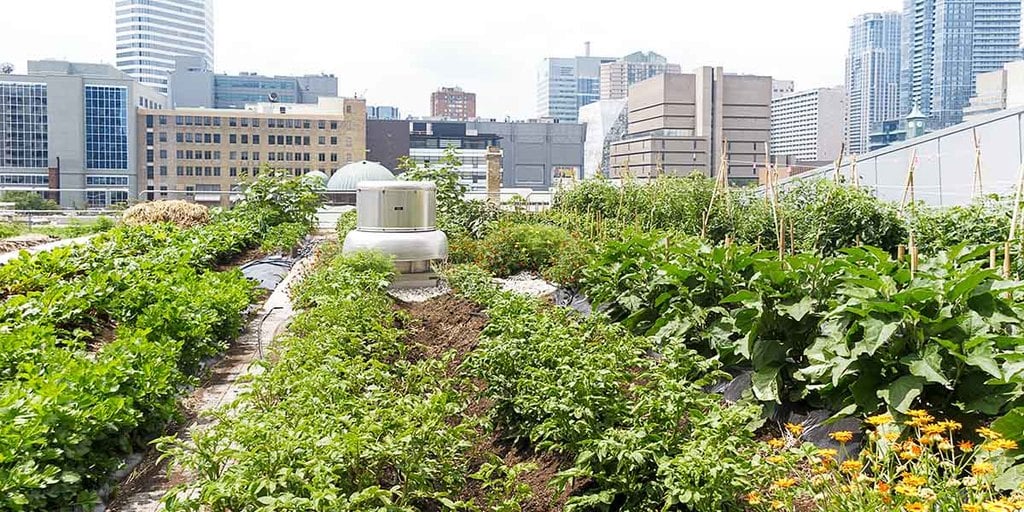Little Known Facts About City Blooming.
Little Known Facts About City Blooming.
Blog Article
Not known Factual Statements About City Blooming
Table of ContentsSome Known Details About City Blooming An Unbiased View of City BloomingWhat Does City Blooming Do?The Facts About City Blooming RevealedFascination About City Blooming
Intrigued in growing food available in the City of Chicago? Considering starting a community yard? Adjustments to the Chicago Zoning Statute enable agricultural uses like area yards and city ranches in numerous parts of the city. Below is a listing of frequently asked questions concerning the rules and policies that cultivators should consider when intending a city agriculture task.
The zoning change does not change any various other codes taking care of composting, structure authorizations, buying or leasing City possessed building, service licenses or ecological contamination. There are existing codes that control these issues and they remain in full impact and may apply to your job. Community gardens are generally possessed or handled by public entities, public organizations or community-based companies and kept by volunteers.
Urban farms grow food that is intended to be offered, either on a nonprofit or for-profit basis. Due to their business objective, city farms call for a company license. Yes. An area yard is allowed to offer surplus create that was expanded on site if the sales are accessory or subordinate to the garden's primary purpose explained over.
City Blooming Can Be Fun For Anyone
Composting is permitted however only for plant material that is produced and made use of on site. The amount of compost material can not exceed 25 cubic lawns at any kind of given time according to the requirements in 7-28-715 of the City's Municipal Code. Yes. Because the soil at a lot of new garden websites needs changing, garden compost, dirt, timber chips, or various other products can be gotten to build or boost the growing space - eco-friendly practices.

If a building permit is required then the hoophouse will certainly be thought about an accessory structure. You can figure out even more about the structure license demands by contacting the Department of Structures. The 25,000-square-foot dimension limit is planned to protect against a solitary neighborhood garden from controling a given block or diminishing the block's existing property or business character.
The limit does not apply to yards located in Public advice Open Space (POS) districts. Can there be more than one community yard that is 25,000 square feet on a solitary block? Secure fencing is not needed, nonetheless, gardens that have large auto parking locations may be required to set up fence or other landscaping functions.
4 Simple Techniques For City Blooming
B1 & B2 areas call for that all industrial use activities be performed indoors. R districts limit business activity. The guidelines reflect the function and intent of the Zoning Code. Is fence required for metropolitan farms? Yes. Fencings may be needed, together with landscape design and testing, for sure parking areas and outdoor work or storage space areas depending on location and the specific task happening.
Urban ranches call for structure licenses and zoning authorizations prior to building (sustainable gardening). Various other kinds of city evaluation may be required depending on specific structures, activities, size, landscape design, licensing, public health and stormwater administration issues.
Yes. The sort of license is figured out by what is taking place at the website. The Department of Organization Affairs and Customer Defense can help figure out the specific kind of organization permit that's required. Yes. Off road car park is required for a lot of industrial projects in Chicago. The required number of garage is based on the number of staff members working with website and not the square footage of the expanding area.
Not known Facts About City Blooming

An urban ranch can sell garden compost product created on website, however, the operation has to comply with the laws in 7-28-715 of the Chicago Municipal Code. Aquaponic systems are enabled inside your home on urban ranches in numerous zoning districts.
Approximately 5 hives or colonies of honey might be kept as an accessory usage. Beekeepers must sign up with the Illinois Division of Agriculture. For additional information about the proposed zoning change you may speak to the Division of Housing and Economic Advancement, Bureau of Planning and Zoning at 312.744.8563.
, which takes place in country areas at the edge of suburban areas.
The smart Trick of City Blooming That Nobody is Talking About
It can involve a movement of organic farmers, "foodies" and "locavores", who look for to create social media networks based on a common values of nature and neighborhood holism. These networks can create using official institutional assistance, ending up being incorporated right into neighborhood town as a "transition town" activity for sustainable city growth.
In either case, the a lot more direct accessibility to fresh vegetable, fruit, and meat items that might be know with city farming can enhance food safety and food safety while lowering food miles, bring about reduced greenhouse gas exhausts, thus adding to climate change mitigation. A few of the initial proof of city agriculture originates from Mesopotamia.
Report this page